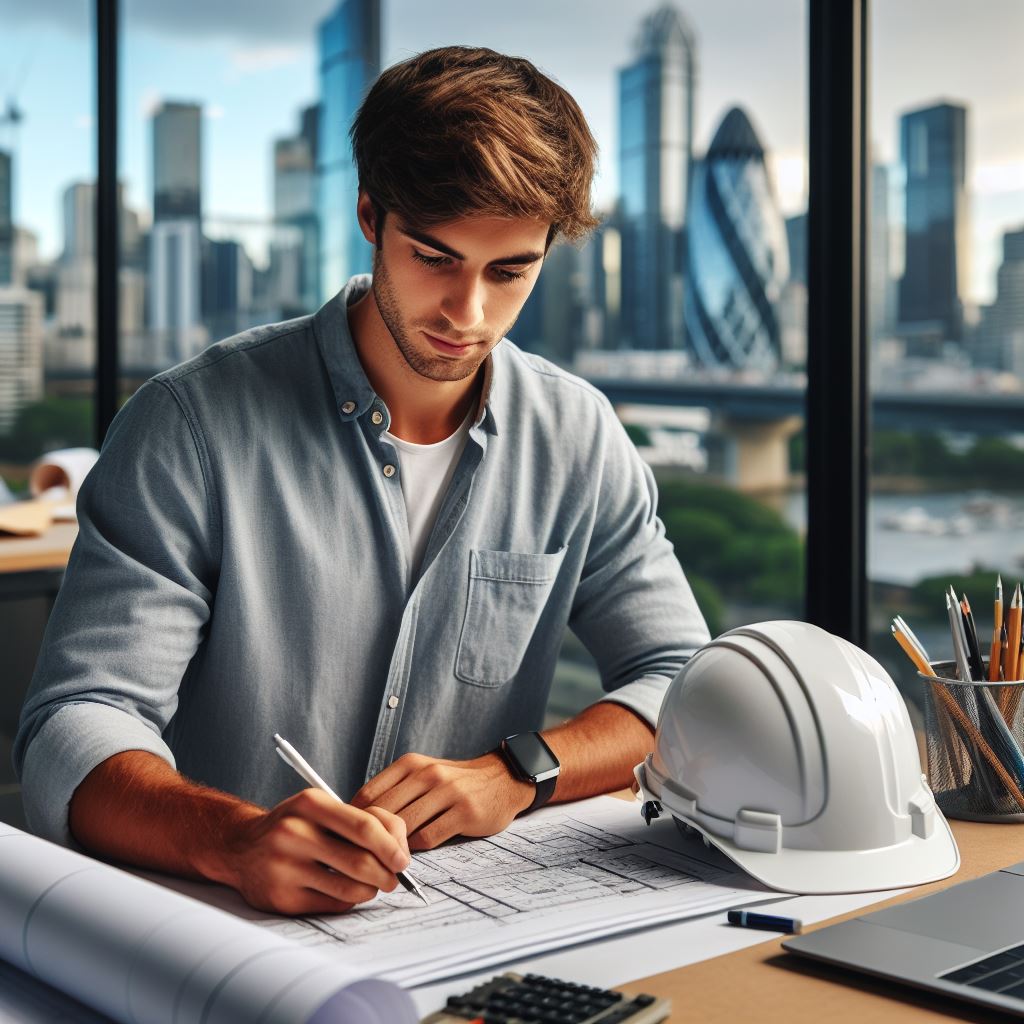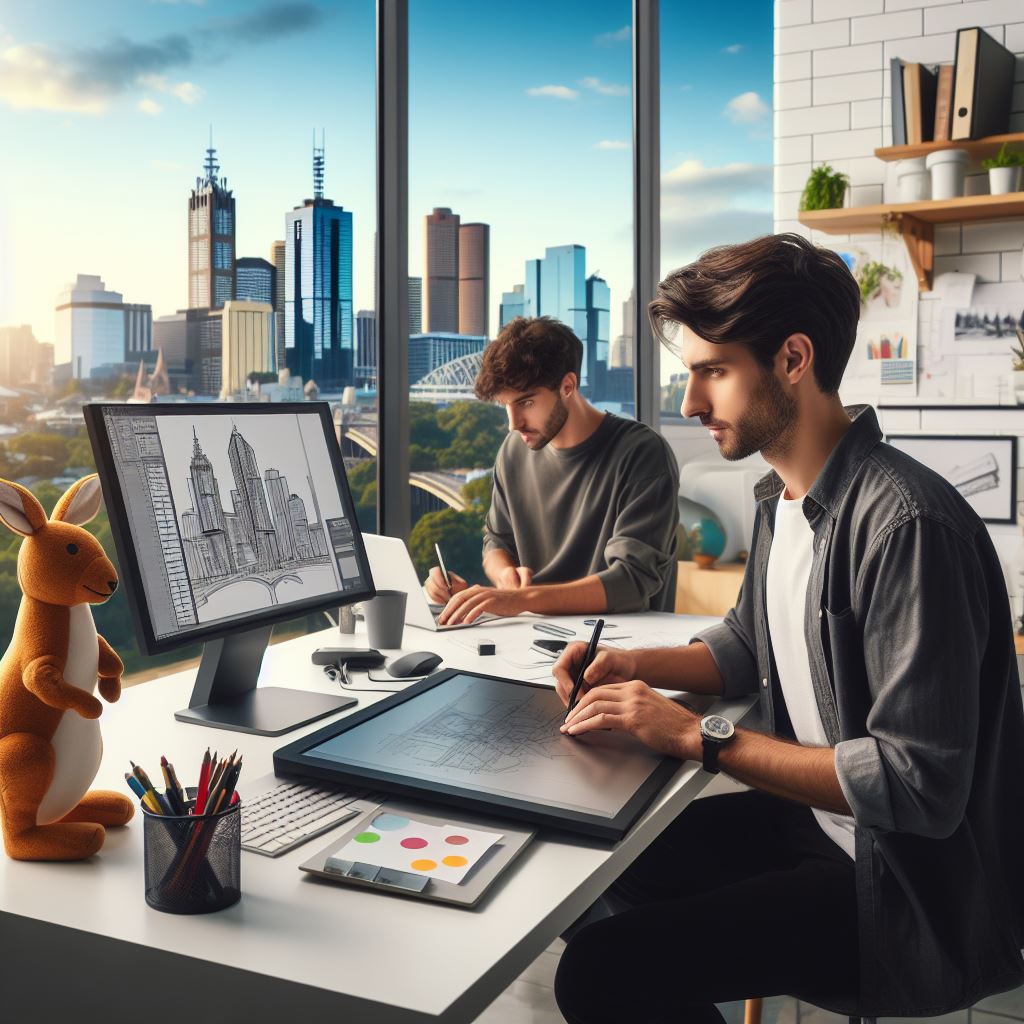Introduction
Eco-friendly practices are becoming increasingly important due to environmental concerns.
Australia has emerged as a leader in promoting eco-friendly initiatives.
This blog section provides a brief overview of “Eco-Friendly Drafting: Australia’s New Edge”.
In an era where environmental consciousness is paramount, eco-friendly practices are gaining unprecedented significance globally.
The urgency to address climate change and promote sustainable living has pushed countries to adopt eco-friendly initiatives. Australia, being at the forefront of this movement, has made remarkable progress in embracing and promoting green practices.
The Growing Importance of Eco-Friendly Practices
- Environmental Impact: As our planet grapples with the consequences of climate change, the need for eco-friendly practices has become more crucial than ever.
- Resource Conservation: Eco-friendly practices ensure responsible use of resources, preventing depletion and fostering a more sustainable future.
- Health and Well-being: The impact of eco-friendly practices extends to human health, reducing pollution and promoting cleaner air and water.
- Biodiversity Preservation: Adopting green initiatives aids in preserving biodiversity, protecting endangered species and maintaining ecological balance.
- Global Responsibility: Nations worldwide are recognizing the global responsibility to minimize their carbon footprint and mitigate environmental damage.
Australia’s Progress in Promoting Eco-Friendly Initiatives
- Renewable Energy Advancements: Australia has made substantial investments in renewable energy sources, including wind, solar, and hydroelectric power.
- Waste Reduction Strategies: The country has implemented comprehensive waste reduction strategies, focusing on recycling and waste-to-energy technologies.
- Sustainable Agriculture Practices: Australia promotes sustainable agriculture, emphasizing organic farming and responsible water management to preserve soil health.
- Green Building Standards: The construction industry in Australia adheres to stringent green building standards, emphasizing energy efficiency and environmentally friendly materials.
Brief Overview of the Topic “Eco-Friendly Drafting: Australia’s New Edge”
- Introduction to Eco-Friendly Drafting: Eco-friendly drafting encompasses the integration of sustainable practices into various industries, from architecture to manufacturing.
- Australia’s Pioneering Approach: Australia is emerging as a pioneer in eco-friendly drafting, emphasizing sustainable design, responsible manufacturing, and green construction.
- Innovative Technologies: The country is harnessing innovative technologies to develop eco-friendly drafting solutions, setting new benchmarks for global environmental stewardship.
- Collaborative Initiatives: Collaborative efforts between government, industries, and communities play a pivotal role in shaping Australia’s eco-friendly drafting landscape.
- Economic Benefits: Beyond environmental advantages, Australia’s commitment to eco-friendly drafting yields economic benefits, fostering innovation and creating green job opportunities.
In essence, the growing importance of eco-friendly practices is undeniable, and Australia’s proactive stance in promoting green initiatives positions it at the forefront of environmental leadership.
As the country continues to embrace eco-friendly drafting, it not only safeguards its natural resources but also sets a new edge for sustainable development on the global stage.
Definition of eco-friendly drafting
Drafting in the context of design and architecture.
Drafting, in the context of design and architecture, refers to the process of creating and preparing technical drawings, plans, and blueprints.
Introduction to eco-friendly or sustainable drafting practices.
Eco-friendly or sustainable drafting practices involve incorporating environmentally conscious elements into the design and construction process.
These practices aim to minimize the negative impact on the environment and promote sustainable living.
Eco-friendly drafting takes into account factors such as energy efficiency, waste reduction, use of renewable resources, and low environmental footprint.
Importance of incorporating sustainable principles in the drafting process.
- Minimizing Environmental Footprint: Incorporating sustainable principles reduces the environmental impact of the design and construction process.
- Energy Efficiency: Sustainable drafting emphasizes designing buildings that are energy-efficient, reducing energy consumption and associated carbon emissions.
- Waste Reduction: By carefully planning materials and construction methods, sustainable drafting aims to reduce waste during both the construction and operational phases of a building.
- Renewable Resources: Employing renewable resources in drafting ensures the utilization of eco-friendly materials that can be replenished over time.
- Healthy Living Environment: Sustainable drafting prioritizes the creation of spaces that promote occupant health, well-being, and comfort.
- Cost Savings: Incorporating sustainable principles in the drafting process can lead to long-term cost savings through reduced energy consumption and lower operational costs.
- Ethical Responsibility: Sustainable drafting recognizes the ethical responsibility of designers and architects to protect and preserve the environment for future generations.
- Legislative Requirements: Many countries, including Australia, have implemented legislation that requires sustainable practices in the design and construction industry.
Basically, eco-friendly drafting involves incorporating environmentally conscious elements into the design and construction process in order to minimize environmental impact and promote sustainable living.
By adopting sustainable principles such as energy efficiency, waste reduction, use of renewable resources, and consideration for occupant well-being, architects and designers can contribute to a greener, healthier, and more sustainable future.
Australia’s commitment to eco-friendly drafting
Australia is well-known for its commitment to sustainable practices, and this extends to the field of drafting.
The country has implemented a range of environmental policies and regulations, along with government initiatives, to promote eco-friendly drafting. Let’s take a closer look at Australia’s efforts:
Overview of Australia’s environmental policies and regulations
Australia has a strong framework of environmental policies and regulations in place to protect its natural resources and reduce carbon emissions. These policies focus on promoting sustainable practices within various industries, including drafting.
The government has recognized the need for sustainable design and architecture as part of its commitment to environmental stewardship.
One notable policy is the National Construction Code, which sets mandatory standards for energy efficiency in buildings. These standards ensure that new constructions and major renovations are designed to meet environmental performance requirements.
This code encourages the use of eco-friendly materials, efficient water systems, and renewable energy sources.
Additionally, Australia has implemented the Green Building Council of Australia’s Green Star certification system. This voluntary program assesses the environmental impact of buildings and provides a rating based on their sustainability features.
It encourages architects, builders, and designers to incorporate eco-friendly practices into their drafting to earn higher ratings.
Your Personalized Career Strategy
Unlock your potential with tailored career consulting. Get clear, actionable steps designed for your success. Start now!
Get StartedGovernment initiatives promoting sustainable design and architecture
The Australian government actively supports sustainable design and architecture through various initiatives. One such initiative is the Sustainable Design Assessment in the Planning Process (SDAPP).
It aims to incorporate sustainable principles from the beginning of the urban planning process. By integrating eco-friendly practices into the initial draft, SDAPP helps create environmentally responsible communities.
An important aspect of promoting eco-friendly drafting is providing access to relevant information and resources. The government has established the Your Home website, which offers comprehensive guidance on sustainable design and building.
This online resource empowers architects, designers, and homeowners to make informed decisions that minimize environmental impact while maximizing energy efficiency and comfort.
Furthermore, the government encourages research and innovation in sustainable design through grants and funding. These financial incentives support the development of new technologies, materials, and techniques that can enhance eco-friendly drafting practices.
By investing in research and development, Australia aims to continually improve the sustainability of its built environment.
Examples of eco-friendly drafting projects in Australia
Australia has seen numerous eco-friendly drafting projects that showcase the country’s commitment to sustainability. One such project is the One Central Park in Sydney.
Designed by Jean Nouvel and Patrick Blanc, it features a vertical garden that not only enhances the building’s aesthetics but also provides improved air quality and insulation.
Another notable example is the Council House 2 (CH2) building in Melbourne. This office building achieved a 6-star Green Star rating—the highest possible rating—due to its integrated sustainable design.
CH2 incorporates passive heating and cooling systems, rainwater harvesting, solar panels, and energy-efficient lighting, reducing its environmental footprint.
The Barangaroo South development in Sydney is also worth mentioning. This waterfront precinct aims to be carbon-neutral and has a strong emphasis on sustainable design.
The buildings within the development utilize natural ventilation, solar shading, and rainwater harvesting systems, contributing to a more sustainable urban environment.
Australia’s commitment to eco-friendly drafting is evident through these projects and many more across the country. By prioritizing sustainability in design and architecture, Australia is setting a new edge in eco-friendly practices.
Read: Architecture Licensing in Australia Explained
Benefits of Eco-Friendly Drafting
Environmental Advantages
- Reduced energy consumption helps in conserving natural resources.
- Efficient drafting processes lead to less waste, minimizing the negative impact on the environment.
- Implementing eco-friendly drafting practices helps combat climate change.
- Using renewable energy sources for drafting further reduces carbon emissions.
- Proper waste management and recycling programs contribute to a cleaner and healthier environment.
Social Benefits
- Eco-friendly buildings provide healthier surroundings for occupants, improving their overall well-being.
- Improved indoor air quality reduces health issues such as allergies and respiratory problems.
- Residents of eco-friendly buildings have a higher quality of life due to increased comfort and productivity.
- These buildings often incorporate green spaces, promoting a sense of community and connection with nature.
- Communities benefit from reduced pollution levels and a more sustainable lifestyle.
Economic Benefits
Implementing energy-efficient practices cuts costs for individuals and businesses, with long-term savings outweighing initial eco-friendly drafting investments.
Government incentives and rebates boost sustainable practices.
Eco-friendly buildings, with higher market value, attract environmentally conscious buyers and give businesses a competitive edge.
Australia’s eco-friendly drafting offers environmental, social, and economic benefits, reducing energy consumption, waste, and pollution.
It promotes cleaner and healthier environments, fostering community well-being.
Individuals and businesses enjoy long-term utility bill savings.
Governments provide incentives, reducing financial burdens and encouraging sustainable practices.
Eco-friendly buildings gain higher market value, appealing to environmentally conscious buyers and enhancing business images.
Embracing eco-friendly drafting is essential for a sustainable future, benefitting the environment, individuals, communities, and businesses.
Australia must prioritize and invest in eco-friendly drafting practices for a sustainable future.
Read: Challenges Faced by Modern Architects
Challenges and Solutions
Identification of challenges in adopting eco-friendly drafting practices
- Lack of awareness and understanding about eco-friendly drafting practices among professionals.
- Resistance to change and reluctance to adopt new technologies and methods.
- High initial costs associated with implementing eco-friendly drafting practices.
- Limited availability and accessibility of eco-friendly materials and tools.
- Inadequate government regulations and incentives to promote eco-friendly drafting practices.
Potential solutions to overcome these challenges
- Educational campaigns and training programs to raise awareness and knowledge about eco-friendly drafting practices.
- Offering incentives and tax breaks to individuals and businesses that adopt eco-friendly drafting practices.
- Collaboration with manufacturers to develop and make eco-friendly materials and tools more readily available.
- Developing cost-effective technologies and methods that reduce the initial investment required.
- Strengthening government regulations and creating policies that promote eco-friendly drafting practices.
Importance of collaboration and knowledge-sharing within the industry
Collaboration among professionals, manufacturers, and government bodies drives innovative solutions, fostering a supportive environment for eco-friendly drafting adoption.
Knowledge-sharing overcomes challenges and enhances efficiency.
Identifying hurdles, like a lack of awareness, calls for educational campaigns and incentives.
Resistance to change can be addressed through incentives, reducing financial burdens.
Collaboration with manufacturers helps develop cost-effective, eco-friendly technologies.
Governments must strengthen regulations and offer incentives to promote sustainable drafting methods.
Collaboration is crucial in overcoming challenges; professionals, manufacturers, and governments working together lead to innovative solutions.
Sharing experiences improves efficiency and contributes to joint research, creating sustainable drafting methods.
Despite challenges, solutions exist; raising awareness, offering incentives, and collaboration can drive the industry toward sustainable practices.
Collaboration and knowledge-sharing are pivotal, creating a supportive environment for eco-friendly drafting growth.
Read: Historic Preservation in Australian Architecture

Success stories
Showcasing successful eco-friendly drafting projects in Australia
- Australia has become a hub for innovative and sustainable drafting projects that are making a positive impact on the environment. These projects serve as shining examples for others to follow.
- One such project is the Green Tower in Melbourne, which incorporates a variety of eco-friendly features such as solar panels, rainwater harvesting systems, and passive design principles.
- Another notable example is the Sustainable House Day initiative, where homeowners open their sustainable homes for public viewing, showcasing the benefits of eco-friendly design and construction.
- The Council House 2 in Melbourne is another successful project that demonstrates a commitment to sustainability. It utilizes innovative technologies to reduce energy consumption and waste production.
These success stories provide inspiration and proof that eco-friendly drafting is not only possible but also financially viable.
Interviews with architects or designers leading the way in sustainable drafting
- In order to gain deeper insights into the world of sustainable drafting, interviews with industry leaders are conducted.
- An interview with renowned architect Julia Green revealed her passion for sustainable design and how she incorporates eco-friendly elements into her projects.
- Another interview with Michael Smith, a sustainable building designer, shed light on the challenges and rewards of creating environmentally conscious buildings.
- These interviews not only highlight the expertise of these professionals but also provide valuable advice for aspiring architects and designers.
Lessons learned and inspiration for future projects
Exploring successful projects and interviews yields valuable lessons applicable to future eco-friendly drafting projects. Consider local climate and sustainable materials, prioritize energy efficiency, and make conscious construction choices.
Success stories, interviews, and lessons demonstrate sustainable drafting as a necessity.
Australian architects lead with innovative projects, featuring eco-friendly elements for a greener future. Homeowners participating in Sustainable House Day raise awareness and inspire sustainable design.
Architects like Julia Green and designer Michael Smith spearhead the sustainable drafting movement.
Their expertise and commitment pave the way for future architects. Lessons emphasize adapting to local conditions, prioritizing energy efficiency, and making conscious material choices.
Following these principles creates buildings with a minimal carbon footprint, enhancing occupants’ quality of life. Australia’s innovation in eco-friendly drafting sets a global example.
Success stories, interviews, and lessons inspire architects to push sustainable design boundaries. Harnessing eco-friendly drafting power creates a harmonious built environment, preserving the planet for generations.
Stand Out with a Resume That Gets Results
Your career is worth more than a generic template. Let us craft a resume and cover letter that showcase your unique strengths and help you secure that dream job.
Get HiredRead: Surveying 101: An Aussie’s Intro to the Field
Delve into the Subject: Mechanical Engineer: Freelancing in Aus
Learn More: Networking Tips for Mech Engineers in Aus
Tips and resources for eco-friendly drafting
Practical tips for designers and architects interested in implementing sustainable drafting practices
- Minimize material waste by carefully planning and measuring before starting any drafting or design project.
- Incorporate passive design strategies such as natural ventilation and daylighting to reduce energy consumption.
- Choose sustainable materials that are locally sourced, renewable, or have a low environmental impact.
- Optimize the use of space by focusing on functionality and efficiency, avoiding unnecessary square footage.
- Integrate green infrastructure elements such as green roofs or rainwater harvesting systems into your designs.
- Consider the life cycle analysis of materials and products, aiming for those with a smaller carbon footprint.
- Use energy-efficient appliances and fixtures in your designs to reduce energy consumption.
- Incorporate principles of biophilic design, connecting people with nature while promoting health and well-being.
- Communicate the importance of sustainability to clients, educating and encouraging them to embrace eco-friendly design.
- Collaborate with other professionals, such as engineers and contractors, to ensure integrated sustainable practices throughout the project.
Online resources and tools to support eco-friendly drafting
- Green Building Council of Australia (GBCA) – Provides valuable resources, certifications, and guidance for sustainable building practices.
- National AustralianBuilt Environment Rating System (NABERS) – Offers tools and certifications to assess and improve the environmental performance of buildings.
- Sustainable Design and Assessment Tools (SDAT) – A comprehensive online resource that assists in evaluating and implementing sustainable design strategies.
- YourHome – An Australian government initiative offering practical advice and resources for sustainable home design and construction.
- Ecospecifier – An independent database providing access to eco-friendly and healthy products, materials, and technologies.
- Climate Positive Design – A platform that supports architects and designers in creating carbon-positive projects through various design strategies.
Certifications or organizations promoting sustainability in design
- Green Star Certification – An internationally recognized certification program that assesses the sustainability of buildings and communities.
- Leadership in Energy and Environmental Design (LEED) – A globally recognized certification for green buildings.
- Building Research Establishment Environmental Assessment Method (BREEAM) – A sustainability assessment method for buildings and infrastructure.
- Architects Declare – An international collective of architects committing to take action on the climate and biodiversity crisis.
- Living Building Challenge – A certification program that promotes the most advanced measures of sustainability in the built environment.
- Australian Sustainable Built Environment Council (ASBEC) – A peak body advocating for sustainable building practices in Australia.
By implementing these practical tips and utilizing the available online resources and certifications, designers and architects can contribute to creating a greener and more sustainable built environment.
Together, we can shape a future where eco-friendly drafting practices are the norm and benefit both the planet and its inhabitants.
Conclusion
In closing, the significance of eco-friendly drafting cannot be overstated, marking a pivotal shift in design paradigms.
As we’ve explored throughout this blog, Australia emerges as a trailblazer, spearheading sustainable initiatives within the drafting domain.
The country’s commitment to environmental stewardship positions it as a global leader in incorporating green practices into design processes.
Australia’s proactive approach emphasizes the fusion of innovation and sustainability, setting a commendable benchmark for the international community.
The nation’s dedication to eco-friendly drafting not only reduces environmental impact but also fosters a culture of responsibility within the design and architecture sectors.
As we navigate the evolving landscape of design, this section serves as a rallying call.
Individuals and businesses are urged to embrace sustainable drafting practices.
The call to action resonates with the need for a collective commitment to environmental responsibility, encouraging a widespread adoption of eco-friendly principles in drafting endeavors.
Australia’s leadership in this area presents an inspiring model, inviting professionals and enthusiasts alike to contribute to a greener, more sustainable future.
By incorporating eco-friendly principles into drafting processes, we not only align with global environmental goals but also contribute to the creation of a resilient and ecologically balanced design ecosystem.
Let’s unite in this endeavor, shaping a future where innovative design and environmental consciousness seamlessly coexist.




